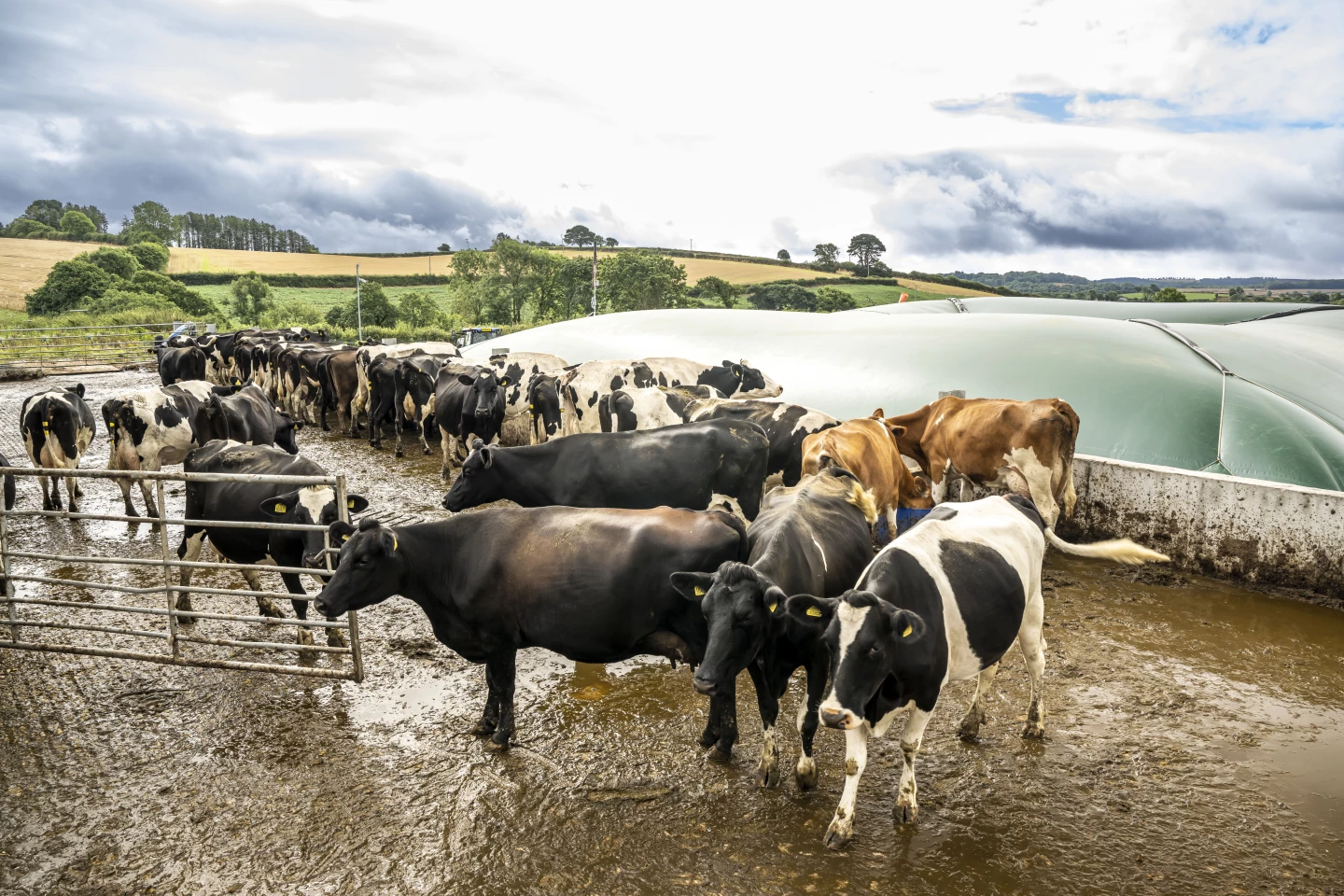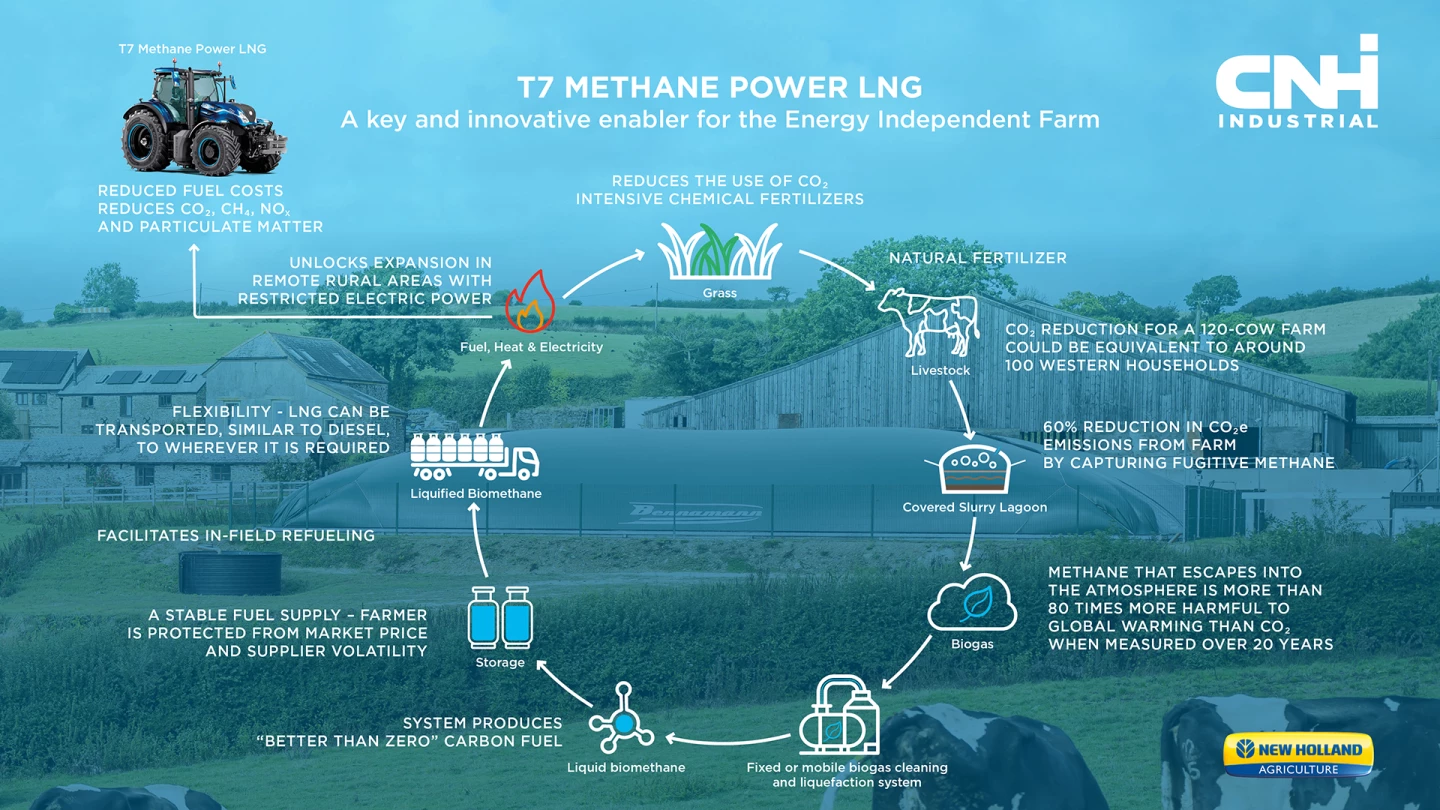New Holland Agriculture has announced a new tractor designed to run on fuel created on-site using cow manure. The T7 Methane Power LNG offers the same power and torque as a diesel tractor, but it's part of a system that can greatly reduce emissions.
The system, upon which New Holland has partnered with UK company Bennamann, works roughly like this: farmers collect as much cow poop as possible as a slurry, and instead of directly using it as fertilizer, they pump it into large tanks, or covered lagoons. Anaerobic organisms chow down on this lumpy thickshake, and produce a biogas that contains mainly methane.
This gas is collected and purified into biomethane, which can be used around the farm wherever natural gas would normally be used. Or, it can be compressed and liquefied into LNG, or liquefied natural gas, which needs to be kept in cryogenic tanks at -162 °C (-260 °F). This can be sold off as a product, or used directly to run specially tailored engines. The solid remainder of the waste is used as fertilizer.

The T7 Methane Power LNG is currently a concept tractor, but according to New Holland, it's the world's first tractor designed to run on LNG, allowing farmers to create their own fuel.
According to this 2018 study in Applied Energy, producing and selling biomethane only begins to make sense economically if you're running more than about 3,600 head of cattle, due to the expensive equipment needed for the purification and liquefaction of the biogas. It would appear Bennamann has a solution here, in the form of mobile equipment that can travel from farm to farm, periodically converting captured biogas to LNG. The company also sells the cryogenic tank systems needed to keep the LNG at temperature.
How much LNG can you expect from a certain number of cattle, and at what point does a system like this start paying for itself? Well, this is hugely variable, depending on the breed, what you're feeding them, how much of their time they spend in open pasture as opposed to in barns or stables where their poop can easily be collected. So the question of whether this kind of system makes sense is highly dependent on each individual operation, although Bennamann says its approach is designed to be profitable for "livestock farms of any size."

But in an environmental sense, the effects are significant. Methane is a much more powerful greenhouse gas than carbon dioxide over the short term. Over a time span of 20 years, a kilogram of methane in the air will produce a warming effect more than 80 times stronger than a kilogram of carbon dioxide – it's only on the scale of thousands of years that carbon dioxide overtakes it, since methane breaks down more quickly.
Capturing all those methane emissions from cow poop, then turning them into LNG, then running them through a tractor engine is not an entirely clean process; the tractor exhaust still contains carbon dioxide. But by effectively capturing a whole lot of methane emissions and transforming them into carbon dioxide emissions, as well as preventing the burning of fossil fuel that would otherwise run the tractors, the environmental results are significantly better. "The CO2 reduction for a 120-cow farm is potentially equivalent to around 100 western households," according to New Holland.
Check out a video below.
Sources: New Holland, Bennamann








